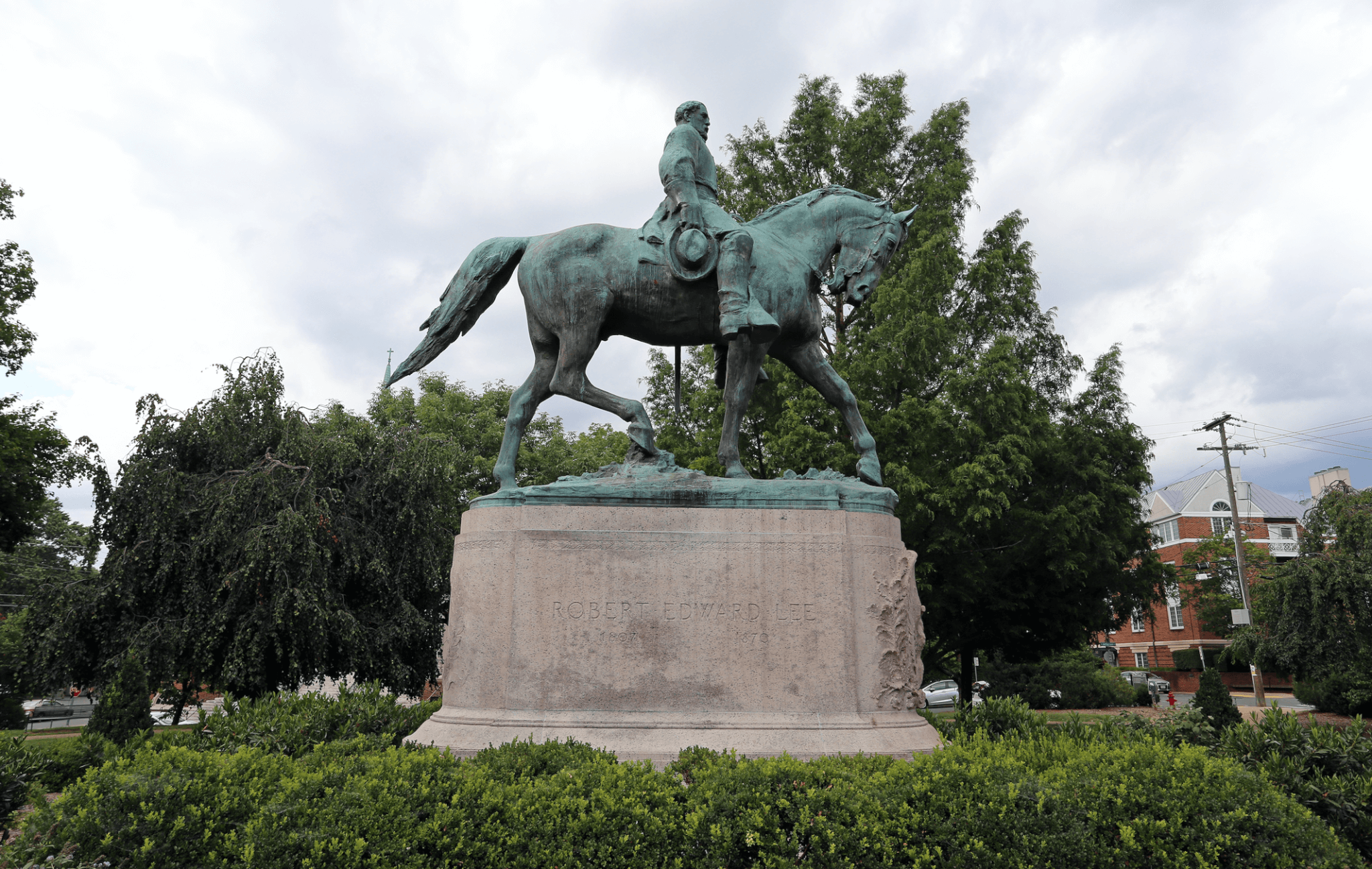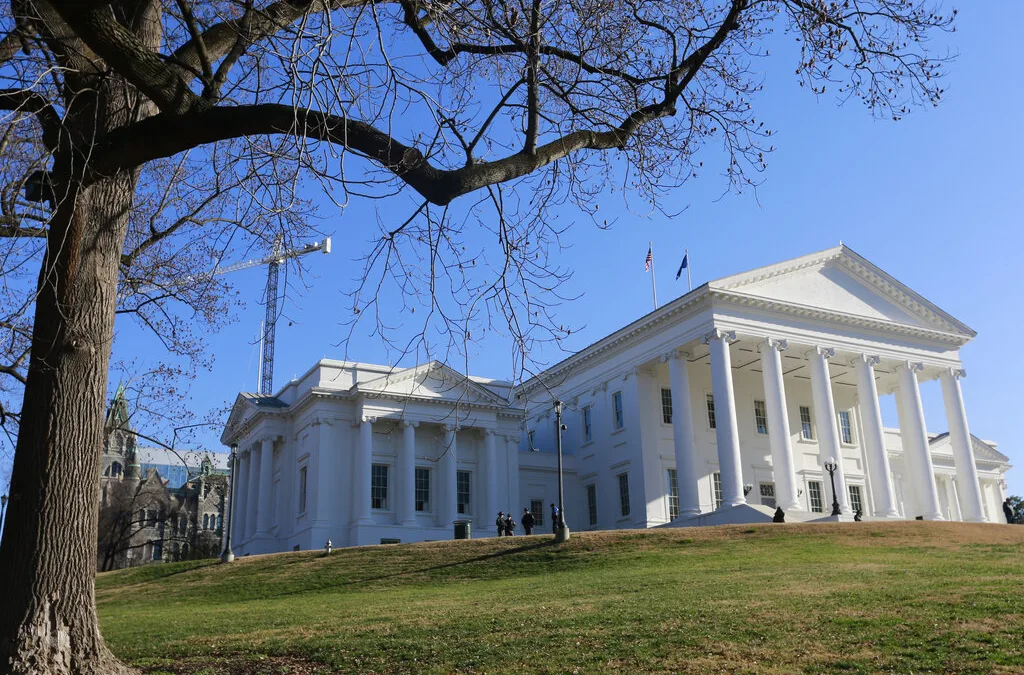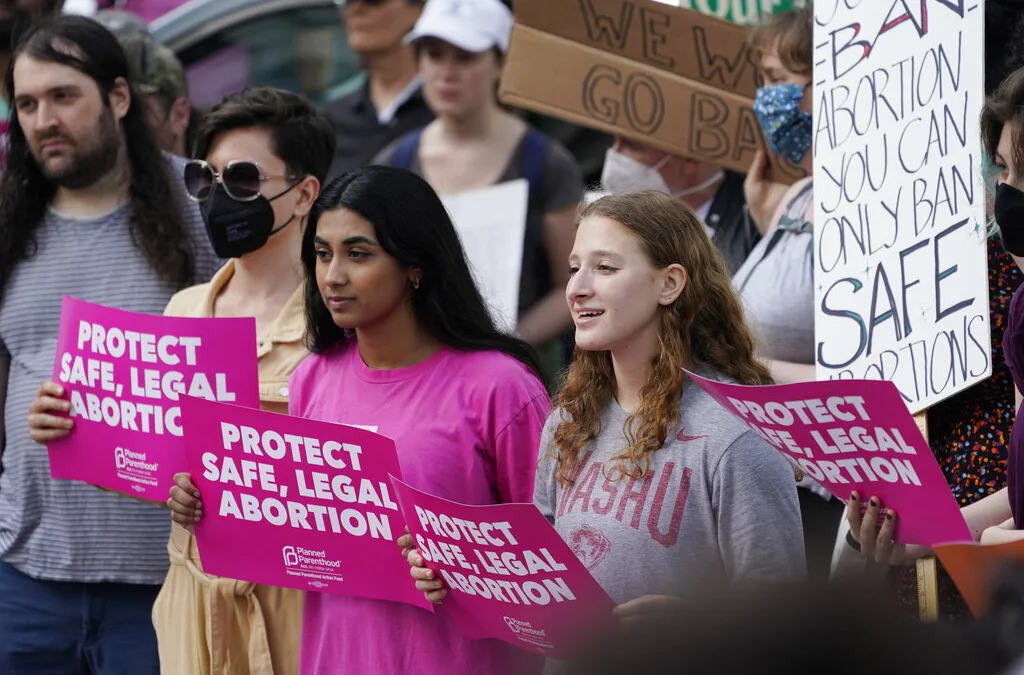
CHARLOTTESVILLE – After years of court battles and a summer of protests calling for their removal, the city of Charlottesville can now take down two statues memorializing Confederate generals.
The Supreme Court of Virginia issued a decision in the case over the statue’s removal Thursday.
The statues depicting Robert E. Lee and Thomas “Stonewall” Jackson were a donation by a private citizen to the city, along with land to build parks around the memorials, in 1918.
In his decision, Justice Bernard Goodwyn said the Virginia law that plaintiffs cited to block their removal does not apply to these Charlottesville statues. That’s because, according to his decision, the law did not take effect until after the statues were already constructed.
“There is no language in the statute that demonstrates the intent on the part of the General Assembly for the prohibitions in Code § 15.2-1812 to apply to monuments or memorials erected by cities prior to 1997,” said Goodwyn.
What Does The Law Say?
The General Assembly enacted the law they’re referencing, Code § 15.2-1812, in 1997.
Under that legislation, prior to removing, relocating, contextualizing, or covering any war monument or memorial, local governments must follow certain steps to engage the community in the process.
A number of Charlottesville citizens including local lawyer and chief plaintiff Frederick Payne filed the legal challenges brought against the city of Charlottesville over these statues removals . The suit against the city also includes plaintiff Betty Jane Franklin Phillips, a “collateral descendant” of the citizen who donated the land to Charlottesville. Also included in the list of plaintiffs was Edward Bergen Fry, the great-nephew of the sculpture who created the Lee Statue.
The Virginia Divisions of the Sons of Confederate Veterans, an organization that glorifies and celebrates its members Confederate ancestries, and The Monument Fund are also plaintiffs in this case. The Monument Fund was formed in 2016 to raise money specifically to litigate against the removal of Confederate monuments.
The plaintiffs asserted that the City Council violated Virginia law in February of 2017 when they approved a resolution to remove the Lee Statue from Lee Park, and to rename and redesign both Lee Park and Jackson Park where the “Stonewall” Jackson statue resides, without fulfilling the conditions of the 1997 law.
However, according to Goodwyn’s decision, that law does not apply in this case. That’s because the text of the law does not specify that its intent is to be applied retroactively.
“The failure to express an intention to make a statute retroactive evidences a lack of intention to do so,” Goodwyn said.
Charlottesville City Manager Commits to Redesigning Parks
Charlottesville officials weighed in with their opinions on the matter shortly after the news broke.
“This is an important case for the Charlottesville community and the rest of the Commonwealth,” said Charlottesville City Manager Chip Boyles.
Charlottesville Mayor Nikuyah Walker also spoke about the impact of Thursday’s decision.
“The team in the city attorney’s office did an amazing job. This court decision will positively impact so many lives,” Walker said. “We are forever indebted to the community for their steadfastness and perseverance over the past five years. For all of us, who were on the right side of history, bravo!”
Boyles, meanwhile, promised action.
“I and my administration will work diligently to plan the next steps, in coordination with City Council,” Boyles said. “We also look forward to engaging our community in the redesign of these park spaces in a way that promotes healing and that tells a more complete history of Charlottesville.”
The Racist Legacy of Confederate Monuments
Virginia’s history with Confederate monuments like the ones in Charlottesville has its roots in the Jim Crow Era, according to experts. Historians say their construction wasn’t about memorializing war heroes, but about enforcing racial segregation over 50 years after the end of the Civil War
“The history of these particular monuments in Charlottesville, when you look at the reasons they were put into place, were very much focused on white supremacy and enforcement of Jim Crow laws. And the culture and society at the time,” said Tom Chapman, executive director at the The Albemarle Charlottesville Historical Society. “Being put up in the early 20th century, they were basically trying to put a stamp on where people thought that certain groups in the society needed to be. And who was in charge, and who wasn’t.”
The legacy and intent of these monuments, to intimidate Black people, is still having an effect on Black community members in Charlottesville.
“They don’t create an environment where everyone wants to be around them,” said Donavon Lea, political action chair of the Black Student Union at the University of Virginia in Charlottesville. “They shouldn’t have been there in the first place. It’s really great that they’re going to be gone now.
Toppling Confederate Monuments
Once it’s removed by the city of Charlottesville, these monuments will join a growing number of racist public symbols that have been taken down by protesters and government agencies across the US.
There were nearly 1,800 Confederate monuments, statues and other public symbols in the United States last June, according to BusinessInsider.
However, a representative of the Southern Poverty Law Center estimated that count before a summer of protests against racial injustice and police brutality swept through the nation. One theme of these protests was the toppling of monuments to the Confederacy. This was especially true in Richmond, where protesters were bringing down monuments throughout the summer.
The removal of other monuments to the Confederacy, including the Robert E. Lee Memorial Statue in Richmond, by government agencies, is still in the process of being litigated.
In February, the Southern Poverty Law Center released the report on the number of Confederate statues removed in 2020. The number totaled 168. The highest concentration of those removals happened in Virginia, which took down 71 monuments.
Support Our Cause
Thank you for taking the time to read our work. Before you go, we hope you'll consider supporting our values-driven journalism, which has always strived to make clear what's really at stake for Virginians and our future.
Since day one, our goal here at Dogwood has always been to empower people across the commonwealth with fact-based news and information. We believe that when people are armed with knowledge about what's happening in their local, state, and federal governments—including who is working on their behalf and who is actively trying to block efforts aimed at improving the daily lives of Virginia families—they will be inspired to become civically engaged.


VIDEO: Your support matters!
Your support matters! Donate today. @vadogwoodnews Your support matters! Visit our link in bio to donate today. #virginianews #virginia #community...

Op-Ed: Virginia’s new Democratic majorities pass key bills to improve your lives, but will Youngkin sign them?
The 2024 Virginia General Assembly regular session has wrapped up. It was a peculiar session from the outset, with Democratic majorities in the...

Op-Ed: Why Virginia Needs A Constitutional Amendment Protecting Reproductive Freedom
Virginia’s recent election season in 2023 drew in eyes from all over the country. Reproductive freedom was on the line and Virginia remained the...

From the state rock to the state flower, here’s how Virginia got its symbols
Have you ever wondered why the Dogwood is the state flower? Or how the cardinal became the state bird? We’re here to answer those questions and more...

VIDEO: Second-gentleman Douglas Emhoff gives speech on reproductive freedom
Second gentleman, Douglas Emhoff touched on reproductive freedom not only being a woman's issue but "an everyone's issue" during the Biden-Harris...

Glenn Youngkin and the terrible, horrible, no good, very bad night
Election Day 2023 has come and gone, and while there are votes to be counted, one thing is perfectly clear: Virginians unequivocally rejected Gov....





